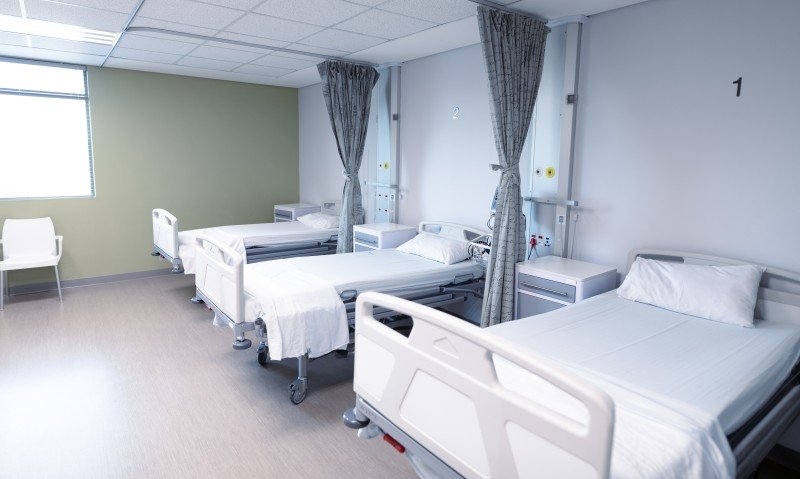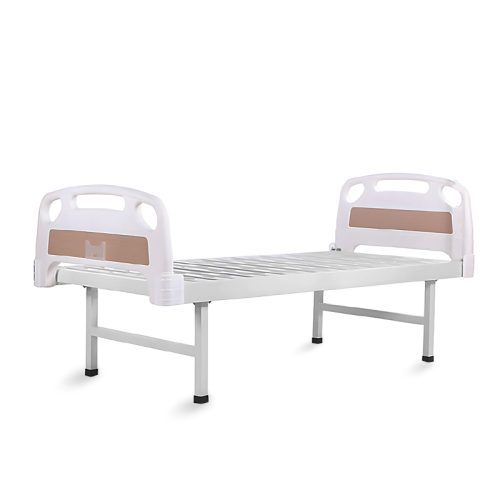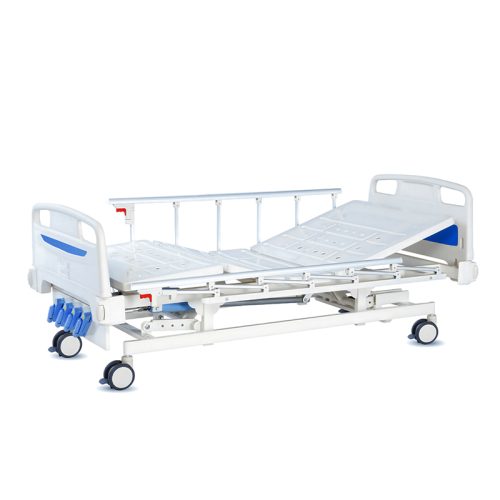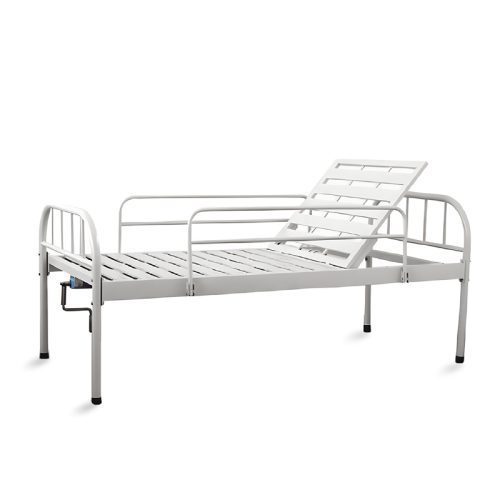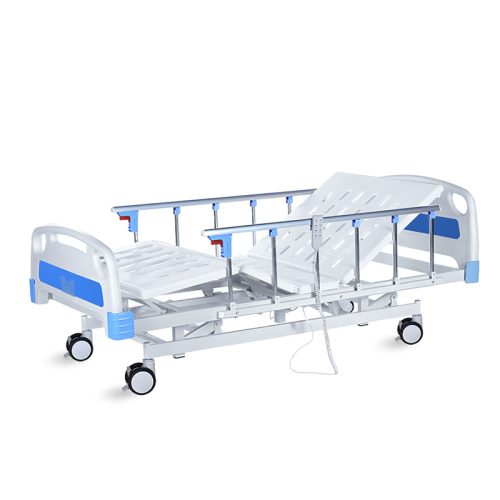
- Cama de hospital
Camas de hospital: características y ventajas clave para los profesionales sanitarios
- Por kelingmedical
### Why Hospital Beds Matter
#### 1. **Patient Comfort and Support**
Hospital beds deliver maximum comfort and support to patients who must remain in bed for long durations. Specialized hospital beds decrease discomfort while preventing pressure ulcers which frequently affect patients who remain bedridden for long durations.
Patients benefit from modern hospital beds which feature adjustable heights and positions for backrests and leg supports to improve comfort levels. Adjustable features on hospital beds enable caregivers to position patients optimally for comfort and effective treatment delivery. Hospital beds with thoughtful design reduce bodily strain for patients which results in an improved recovery experience.
#### 2. **Mobility and Ease of Care**
Hospital beds provide healthcare providers and caregivers with essential functionality along with convenient movement capabilities. Hospital beds often have electric or manual controls to enable simple adjustments to the bed’s height, backrest, and footrest. Caregivers can move patients to different positions quickly and efficiently because of this adjustable design which reduces physical stress for patients and caregivers alike.
Hospital beds feature safety components like side rails to help keep patients from falling out of bed especially those who have limited mobility or cognitive challenges. Beds intended for home care environments typically employ compact designs which make them easy to transport and use within residential spaces.
#### 3. **Infection Control and Hygiene**
Healthcare facilities prioritize infection control above other concerns. Hospital beds contain features which enable straightforward cleaning and upkeep to ensure sanitary conditions are maintained. Hospital bed materials include resistance to bacteria and other pathogens which helps to decrease the chance of infections.
Hospital beds need to have removable and washable covers or antimicrobial treatments to ensure cleanliness is maintained. Distributors should offer hospital beds that are designed with hygiene as a top priority to meet healthcare providers’ strict standards.
#### 4. **Customization for Patient Needs**
Hospital beds need to be adaptable to support various conditions because each patient presents different requirements. Adjustable hospital beds offer patients with specific medical conditions the necessary comfort and support through various positioning options for conditions like arthritis or spinal problems and post-surgery recovery.
Healthcare providers can choose optimal beds for patients based on customizable features such as adjustable mattress support and various frame materials along with different bed height options. Distributors need to provide customizable options because hospitals and nursing homes along with home care providers have different needs.
—
### Key Features of Hospital Beds
#### 1. **Adjustability and Positioning**
Hospital beds stand out because they provide multiple adjustment features. Patients benefit from hospital beds that allow them to adjust the head, foot as well as the height to create the most comfortable position for activities such as sleeping, sitting or medical treatment.
– **Electric Adjustability: Patients who need regular repositioning for comfort or medical purposes benefit from electric hospital beds because they provide simple adjustments through a button-activated system.
– **Manual Adjustability: Manual hospital beds are less expensive options which maintain essential bed position adjustments although they demand more physical effort for repositioning yet remain appropriate for certain healthcare environments.
Adjustable beds enhance patient comfort while reducing caregiver workload and maintain proper patient positioning during medical procedures and personal care.
#### 2. **Safety Features**
Hospital beds include multiple safety features which help protect patients from injuries while allowing for secure handling. Some of the most common safety features include:
– **Side Rails: Side rails are standard features on hospital beds to prevent patients from falling out of bed and these rails can be adjusted up or down according to patient mobility levels and care requirements.
– **Locking Mechanisms: The locking mechanisms on many hospital beds prevent movement by maintaining a stable bed frame to ensure patients remain safely positioned.
– **Braking System: Mobile beds require a reliable braking system to stop them from moving by accident while these systems prove essential in healthcare facilities where patients need transfers between rooms.
Hospital settings place patient safety above all else while these features guarantee patient security and support caregivers in providing effective treatment.
#### 3. **Durability and Support**
Hospital beds need to be highly durable to handle the continuous stress from patient movement and weight during care activities. Hospital bed frames use high-strength materials like steel and aluminum to provide excellent durability and support.
The design of a hospital bed depends heavily on the mattress support system. The mattress support system requires sufficient strength to hold patients with different weights and body measurements but must also offer comfort for long-term resting periods. Hospital bed mattresses that are specially designed help both to prevent pressure sores and deliver necessary support to patients.
#### 4. **Easy Maintenance and Hygiene**
Hospital beds come into contact with bodily fluids and medications as well as other contaminants that make regular cleaning necessary. The cleaning process becomes more efficient with beds made from materials that allow easy disinfection like antimicrobial-coated surfaces or removable covers.
Smooth non-porous surfaces on hospital bed frames minimize dirt accumulation while making cleanliness maintenance easier in healthcare environments. These beds help stop cross-contamination between areas while creating a safer space for patients and staff members.
—
### Conclusión
Hospital beds are vital for patient care as they deliver comfort along with support and mobility while keeping patients safe during their medical treatment. Medical device distributors need to comprehend the full suite of features and customization options hospital beds offer to provide healthcare providers with appropriate solutions.
Hospital beds stand as critical components of contemporary healthcare because they deliver patient comfort for extended stays as well as caregiver safety with easy operation and infection control compliance. Hospital bed distributors who provide top-quality products with key features like adjustability and safety will succeed in meeting the expanding market need for specialized medical equipment.
—
### FAQ
#### 1. **What are hospital beds?**
Hospital beds represent specially constructed beds used in medical facilities. The beds offer adjustable support and comfort features for patients who must stay in bed for long durations because of their medical conditions.
Hospital beds are equipped with adjustable head and foot sections as well as height settings alongside safety rails and durable frames for easy maintenance.
Hospital beds come standard with adjustable head and foot positions along with height settings while incorporating safety rails and rugged frames plus surfaces that are simple to sanitize and additional features to promote comfort and allow patient movement.
Hospital beds improve patient comfort by offering adjustable positions that enable patients to achieve a comfortable resting state while pressure-relieving mattresses add extra comfort for those who spend extended time in bed.
Hospital beds provide adjustable positions so patients can find a comfortable position for resting. Pressure-relieving mattresses boost comfort for bedridden patients.
Hospital beds need safety features like side rails and locking mechanisms to stop patients from falling out and maintain bed stability while in use.
Hospital beds prevent patient falls through side rails and locking mechanisms which also maintain bed stability during use. Patients who have restricted movement require this feature for their safety.
Hospital beds typically consist of durable materials including steel, aluminum, and high-quality plastic designed to provide strength and stability over time.
Typical hospital beds use durable materials including steel and aluminum combined with high-quality plastic. These materials create hospital beds that are strong and stable while providing long-term utility in medical settings.
—
Distributors of medical devices who deliver hospital beds equipped with essential features supply healthcare providers with necessary equipment to improve patient care. Patients experience better comfort and safety during recovery when they use the appropriate hospital bed.
📧 Correo electrónico: inquiry@shkeling.com
🌐 Página web: www.shkeling.com.cn
Esperamos establecer una fructífera colaboración con usted.

